

MEMBERS’ MAGAZINE FALL 2O24












MAGAZINE STAFF
editor
Tim
art
Julie
Patrick
writer
Nicholas Stone
Freesia Lee
director of
Danielle Hobart
museum photographer
Kevin Candland
additional
Eric Martinez / Alisa Wong

















editor
Tim
art
Julie
Patrick
writer
Nicholas Stone
Freesia Lee
director of
Danielle Hobart
museum photographer
Kevin Candland
additional
Eric Martinez / Alisa Wong


As Hallyu! The Korean Wave arrives, I am reminded that our museum’s capacity to chart exciting new directions is enabled by the great strength of our longstanding alliances. SACHI, the Society for Art & Cultural Heritage of India, celebrates the 25th anniversary this year of both its founding and a fruitful partnership with the museum. In honor of this milestone, SACHI has generously commissioned a new sculpture by Ashwini Bhat for our South Asia galleries. I was moved to witness its installation this summer — and not just because it’s a bronze! An understated but poignant symbol of environmental concerns, Bhat’s sculpture speaks to a universal condition: We are all inhabitants of one planet, sharing the same air, the same oceans, and the same desire for a brighter future. Likewise, the worldwide fascination with South Korean pop culture explored in Hallyu! reflects
the contemporary Asian diaspora’s remarkable capacity to inspire and connect diverse audiences through the universal languages of art, music, film, fashion, and technology.
Meanwhile, South Korea literally becomes a site for the world to come together this fall as 30 nations convene for a historic Biennale in Gwangju, where the first-ever U.S. national pavilion was curated by our own Head of Contemporary Art Abby Chen and Assistant Curator of Contemporary Art Naz Cuguoglu. It’s an honor for the entire museum to be presenting the national pavilion at such an important gathering. We could not be prouder of our contemporary team and their impactful presentation of “borderless ideas” — a concept perfectly aligned with the Asian Art Museum’s ongoing mission.
see you at the museum,
Jay Xu
the barbara bass bakar director and ceo
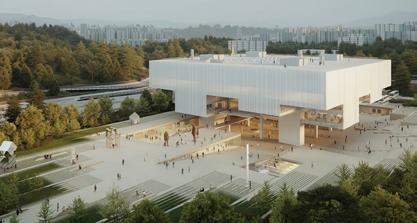


Congratulations to Salle Yoo, recently selected to serve as the next chair of the museum’s dual governing boards, the Asian Art Commission and the Asian Art Museum Foundation. Her twoyear term will begin when she is sworn in at the September board meeting. Salle is well-prepared to lead: She most recently served as vice-chair of the commission and president of the foundation.
Salle joined the museum foundation board in 2018 and has served on various board committees including our recent Strategic Planning Committee, but her involvement with the museum started over a decade ago, when she was invited to join the museum’s Korean Art and Culture Committee. She’s also serving — along with trustee Varsha Rao — as co-chair of this October’s Hallyu! Nights Gala. We’ll feature more from Salle in our next issue.
Following up on her critically acclaimed program for the Taiwan Pavilion at the 2024 Venice Biennale, the museum’s head of contemporary art Abby Chen, collaborating with the museum’s assistant curator of contemporary art Naz Cuguoglu, will present Rhythmic Vibrations at this year’s Gwangju Biennale. This marks the first time both the museum and the United States have been invited to curate at this globally influential contemporary art platform, held every two years in Gwangju, South Korea.
Rhythmic Vibrations showcases Bay Area artists Sahar Khoury, Trinh T. Minh-ha, Younhee Chung Paik, Gazelle Samizay, and TT Takemoto (all of whom are represented in the museum’s collection), as well as artists from beyond the Bay Area such as Labkhand Olfatmanesh and Hayal Pozanti, along with international artists Chang Li-Ren and HORSE & Yujun Wang.
“Curated by two immigrant curators representing a nation of immigrants, Rhythmic Vibrations rehistoricizes and repoliticizes the idea of who gets to make the American Pavilion, who gets to speak for that country, and about what,” says Chen. “Examining the implications of this milestone for both the museum itself — as an institution presenting both Asian American and Asian art outside Asia — and the wider cultural community, the exhibition asks us to ponder the status of art and artmaking in an increasingly unfree world.”
Starting from a place of uncertainty by asking: “Do we represent America and does America represent us?”, this exhibition showcases a version of America that is both specific to its California-based curators and universal in its open-ended exploration of what “America” might mean today.
“
Rhythmic Vibrations highlights different kinds of uprisings: the disturbances, noisemaking, unrest, and movement that generate change — a ‘vibe shift’ that can start small, but grow in energy, momentum, and unity until it feels inevitable,” says Cuguoglu.

Rhythmic Vibrations will be on view from August 30 to December 1 at the May 18 Memorial Cultural Center in Gwangju; the exhibition will come to the Asian Art Museum in 2025.

SEP. 27, 2024–JAN. 6, 2025
THE AKIKO YAMAZAKI AND JERRY YANG PAVILION
WILBUR GALLERY | HAMBRECHT GALLERY
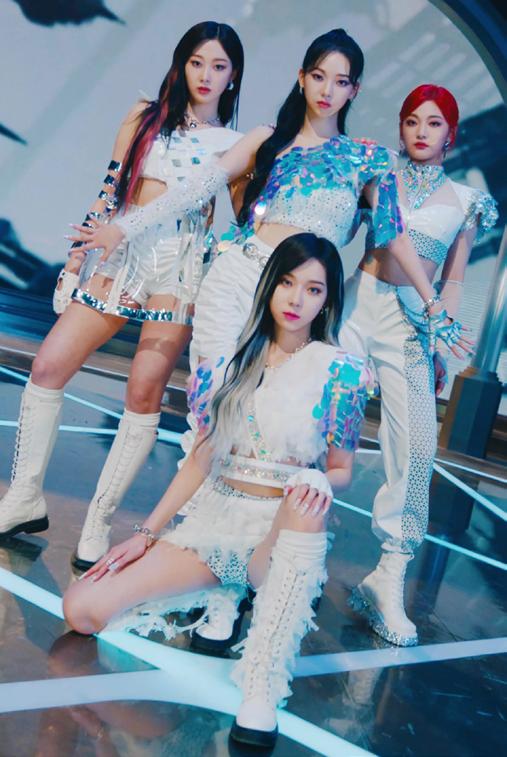
Even if you’ve never heard the term “hallyu,” you’ve almost certainly seen, heard, or otherwise enjoyed its effects already. Whether you’re a Gen Z trendsetter or a go-go Boomer, chances are you’ve gotten a catchy K-pop hit stuck in your head or binge-watched a K-drama that kept you up way past your bedtime. From the booming market for K-beauty products known for their top-notch ingredients to creative fashion that infuses tradition with modern flair, the world can’t get enough of South Korea’s irresistible cultural exports. That’s the magic of Hallyu! the Korean Wave and this fall, it promises to immerse audiences in everything they love about Korean pop culture — a kaleidoscope of creativity that spans cinema, fashion, beauty, and beyond.
Hallyu isn’t just entertainment; it’s a cultural force that connects us all.
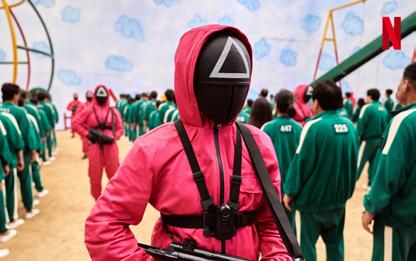

Hallyu! also underscores the resilience and inventiveness that have defined one nation’s global journey to cultural preeminence. The genesis of the Korean wave can be traced back to a staggering national transformation in the decades following the Korean War. As the beleaguered nation emerged as one of the world’s leading producers and consumers of cutting-edge technology, an increasingly liberalized government identified culture industries as a powerful means to raise the country’s international profile. In 1994, the box office from Steven Spielberg's film “Jurassic Park” outperformed the profits from the sale of 1.5 million Hyundai cars — a milestone noted with great interest by Korea’s national media outlets. Meanwhile, the world came online as the internet, previously reserved for universities and research institutions, became accessible to all.

This dovetailing of rapid advances in technology, a cornucopia of innovative creativity, and the 24-hour, interactive, worldwide distribution channel of the internet (and eventually, social media) created the perfect conditions for the century’s first major, lasting cultural wave from Asia.
The wave’s ripple effect began in the late 90s, when a few captivating TV series made their way from South Korea to surrounding Asian nations. The resulting intracontinental enthusiasm was the genesis of the term “hallyu,” a neologism (from han, meaning "Korean" and ryu meaning "flow") that originated in Chinese newspaper coverage marveling at that country’s fascination with Korean television and music in 1999. Fast forward to 2024, and the wave has swept across the globe with unprecedented reach. Yoon-Jee Choi, assistant curator of Korean art, explains, “hallyu isn’t just entertainment; it’s a cultural force that connects us all. Through digital technology and social media, it’s become a global
conversation, influencing everything from our Saturday night plans to how we define moments of joy together.”
Step into the Yang Yamazaki Pavilion and you’ll find yourself surrounded by close to 200 objects and artworks that tell the tale of the wave’s evolution. Movie sets and costumes — including the iconic pink guard outfits from the hit Netflix series “Squid Game” and a set recreation from Bong Joon-ho’s Oscar-winning film “Parasite” — transport you into the heart of your favorite dramas, while immersive displays invite you into what Director of Experience Design Garance Marneur describes as a hallyu “walk of fame.”
“The exhibition doesn’t just start at the Pavilion entrance,” says Marneur, “it’s a continuous journey: a promenade that begins at the museum’s front doors,” which she and her team have adorned with an iridescent, multicolored film to evoke the Korean wave’s signature prismatic palette. Courtesy of a partnership with Google, the Shriram
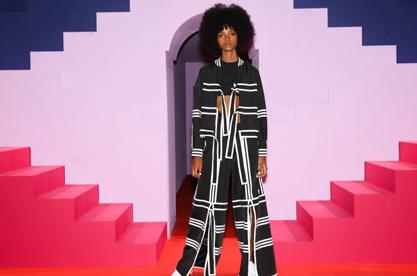

Experiential Learning Center has been transformed into a state-ofthe-art dance studio, where guests can learn K-pop dance steps with the aid of an AI-guided camera; each dancer is then projected onto an outside wall in Shriram, becoming part of a grooving collective in an ever-growing tableau. In Wilbur Gallery, a community wall offers another opportunity for visitors to connect by writing questions or messages, while an upside-down camera on the ceiling provides just one of the exhibition’s numerous and exceptional selfie opportunities. Hallyu! has already made waves at London’s Victoria and Albert Museum and Boston’s Museum of Fine Arts. Now, it’s San Francisco’s turn to dive into this cultural phenomenon, asking questions that resonate with all of us: How do we connect with each other in a world that’s constantly changing? How do art and creativity impact our identities and communities? As The Barbara Bass Bakar Director and CEO Jay Xu puts it, “Hallyu! challenges us to see how Asia is reshaping art, economics, and even diplomacy in today’s world.”
Whether you’re a die-hard fan who knows every dance move from BTS and Blackpink or someone curious about the popularity and impact of Korean culture today, Hallyu! promises an experience that’s both educational and exhilarating. So mark your calendars, spread the word to the K-culture lovers in your life, and get ready: Hallyu! is more than a splash — it’s a tidal wave of excitement that is bringing the world closer together.
Hallyu! The Korean Wave is organized by the Asian Art Museum and the Victoria and Albert Museum. Presentation is made possible with the generous support of the E. Rhodes and Leona B. Carpenter Foundation, CJ ENM, Google.org, John S. Osterweis, and Salle E. Yoo and Jeffrey P. Gray. Additional support is provided by ParksKitchen. Sustained support generously provided by the Akiko Yamazaki and Jerry Yang Endowment Fund for Exhibitions. Created by the V&A — touring the world. Images: Aespa "Next Level" MV, 2021. © SM Entertainment. "Squid Game," 2021. © Netflix. All rights reserved. Saekdong by Darcygom, 2020. Photo: Jihoon Jung, courtesy Darcygom. Panorama of Gangnam City at night, Seoul, South Korea (detail), 2020. Getty Images: Mlenny. Ji Won Choi x Adidas. Courtesy Adidas. Moon Jar Dress, Blue by Minju Kim, 2021. © Minju Kim. Photo: Sangmi An. Model: Leehyun Kim.
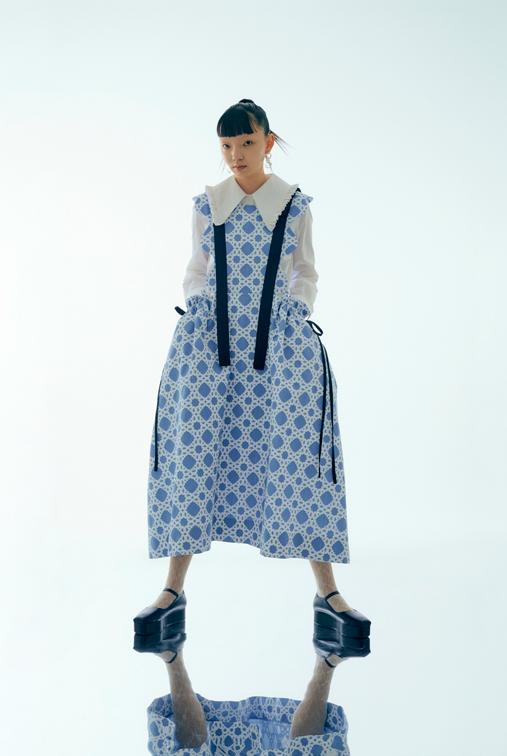
Associate Curator of Korean Art


In preparation for Hallyu! The Korean Wave , Associate Curator of Korean Art Yoon-Jee Choi, organizing curator of the exhibition, sat down with Major Gifts Officer Nicole Lugtu to discuss the global success of Korean pop culture and the Asian Art Museum’s approach to the exhibition, including creating inviting access points for audiences of all ages.
Nicole Lugtu: Please tell us about yourself and your background.
Yoon Jee Choi: I was born in the United States and grew up in Korea, mainly in Seoul. I returned to the States to pursue my PhD in art history at the University of Chicago. My academic interest centers on Korean and Japanese crafts from the 19th to early 20th-century.
Working at the Asian Art Museum taps my connection with Northeast Asian cultures, because I double majored in international studies and Asian art history, which is rare. I’m interested in exploring different perspectives on Korean art, fueled by my studies of East Asian countries. Thanks to its location on the Pacific Rim and its cultural diversity, San Francisco serves as a good hub for considering international perspectives.
NL: The Hallyu! exhibition originated at the Victoria and Albert Museum in London. How is our presentation different?
YJC: We’ll emphasize the precise, carefully planned artistry and techniques in the Korean culture industry. From K-pop choreographers to movie directors and even music video directors, there's so many people who contribute their individual artistic input to create cultural masterpieces.
This wave has been brewing for quite a long time. Koreans did not have much of a global voice historically because of their geographical location as well as frequent periods of war and occupation. Korea’s official contact with the West took place much later than the nearby countries due to a closed-door policy. Moreover, because of the Japanese colonial era, Korea lost time, slowing the pursuit of their own version of modernization. So, what is that identity? What is that tradition? How can we find the middle ground to balance our culture with Western influences? Addressing these questions may have led to the blossoming of Hallyu.
Hallyu! is accessible by everyone and there are different entry points. Some might enjoy Korean pop culture because of a good kimbap that they had at Trader Joe's, or even a Netflix series that they watched. Every one of them is welcome, and that is something
to be celebrated. I want this exhibition to be an opportunity for people to have an entry point and learn more about Korean culture at their own pace.
NL: I like that you say that everyone can find their own entry point. But how would you describe hallyu to somebody who is still wondering what it is?
YJC: Chinese media originally coined the phrase in the 1990s because there was a particular K-drama that was popular on TV. It gained so much popularity that they made this word “hallyu,” which means “Korean wave,” like a wave that dominates pop culture.
K-pop idols, dramas, and movies became popular because their fanbases in different countries in Asia, like Japan and China, had their own preferences. There were many experiments on which types of media work best for each country. Based on that experimentation, we now have several Korean movies and groups winning global awards.

The Korean wave first dominated Asia; it then spread to global status around the 2010s, especially during the pandemic. This worst-case situation turned out to be a good thing for Korean media, because a lot of people discovered K-dramas on streaming platforms.
The focus of the show is inclusivity and inviting everyone to this culture. It’s also important to acknowledge the underbelly of the industry. That includes very strict gender stereotypes, standardized beauty, and mental health issues. I think having a healthier, open conversation around this will eventually lead to a better future for Korean pop culture.
NL: I agree that there is an opportunity with the Hallyu! exhibition to show that Korean culture is a welcoming place and to thoughtfully engage in critique to bring another dimension to the conversation.
YJC: I want this show to be engaging for different individuals for different entry points and it's the obligation of the museum to function this way. We have the power. When we give that power to the objects that are exhibited in our space, I want them to have their own voice to appeal to each audience.
I think this is the appropriate time for hallyu and pop culture to be presented in a museum context, especially when it's touring and being explained in different narratives for local audiences. I don't represent all the scholars who work on K-pop, but I do feel the gap between the entertainment industry and the academic world. I hope this exhibition becomes a bridge between those two.

Security Officer & Staff Superfan
It’s energetic and eye-catching; it’s the perfect escape.
K-pop isn’t just for kids. As the musical phenomenon has swept the globe, K-pop has taken root with fans of all ages, including some of our own staff! In this Q&A, Security Officer
Melinda Dela Cruz shares her personal love of K-pop, insights into what makes the genre so loveable, and what it means to bring this cultural powerhouse to the Asian Art Museum.
What do you love about K-pop?
Melinda Dela Cruz: Through my love of K-pop, I've been able to travel and meet fans from all over the world. We may not be fluent in Korean, but the music and message resonates with us, crossing the cultural divide. As someone with ADHD, it takes a lot to hold my attention. K-pop is a mélange of everything I love: music, dance, art, and fashion. It’s energetic and eye-catching; it’s the perfect escape.
How did you first come to love K-pop?
Two words: Red Velvet. Billboard [magazine] named them the “Best Idol Group Alive,” even beating out better-known groups like BTS and Blackpink. Their “red” side is vibrant, while their “velvet” side is smooth R&B. Red Velvet combines both vocals and visuals into an absolute masterpiece: the harmonies of En Vogue with the moves of Janet Jackson. Seeing them live is life-changing!
What are some things that people who aren’t that familiar with K-Pop might love about it?
Imagine music, fashion, cinematography, dance, and artistry pushed to their limits. Idols [K-pop artists] train for years to debut and that dedication shines through in every performance. Hypnotic vocals and precise choreography against an eclectic backdrop are truly a feast for the senses. Stages pulsate with energy, creating a ripple effect throughout the audience.
What excites you about Hallyu: The Korean Wave?
I’m most excited to see how our guests and staff will respond to the show. This is the most innovative exhibition we’ve had, implementing many facets of Korean culture. From the Oscarwinning film “Parasite” to the fashion of Minju Kim and the global popularity of groups like BTS and Blackpink, I feel like this exhibit will really resonate with a younger audience; I’m eagerly awaiting their reactions.
You’ve worked at the Asian Art Museum for a while; what do you think sets this apart from our other exhibitions?
The Asian Art Museum houses the best collection of Asian art in the world, and we can derive so much knowledge of history from those objects. With Hallyu! we can see how that history has inspired the films, fashion, technology, and music we enjoy today.

DEC 12, 2024–APR 7, 2025

Revered master ink painter Qi Baishi (1864–1957) journeyed from humble beginnings as a peasant carpenter to become one of China’s most sought-after and best-selling artists. With subject matter drawn from the natural world and everyday life (such as his renowned images of shrimp and crabs), Qi’s whimsical approach and technical virtuosity imbue the familiar and mundane with a captivating magic. The artist’s lifetime spanned three eras in China’s history: born in the late Qing Dynasty, he lived to witness both the collapse of the Republic of China and the rise of a new, socialist China, where his accessible motifs made him a proletarian hero. While Qi's ethos remained rooted in folk culture, his work reached a highly-valued status with art world cognoscenti — including Chinese collectors worldwide — setting records (even within the last decade) as the most expensive Chinese artworks ever sold at auction. The semiabstract, minimalist visual language he explored is now recognized as a bridge between Chinese ink traditions and the directions in painting that emerged subsequently in the West with the birth of Modernism. On the 160th anniversary of his birth, this exhibition of 42 works on paper from the Beijing Fine Arts Academy (where the artist served as its first honorary director) celebrates Baishi’s enduring, universal appeal.

“Renowned as the people's artist, Qi Baishi conveys the joy of familiar subjects and motifs that people from all walks of life can easily appreciate,” says Fan Jeremy Zhang, Barbara and Gerson Bakar Curator of Chinese Art. “This prolific artist declined to enjoy retirement but tirelessly explored ink art in his later years, aiming to share his love of nature among a wide audience and help them find enlightenment in everyday life.”
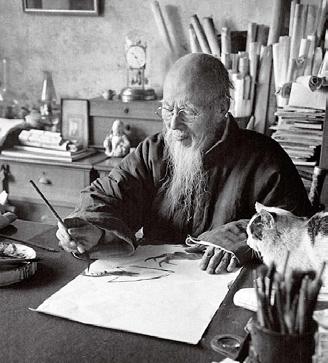

For many of us, a special artwork is one that makes us feel something. It might be a feeling of connection to community, a profound sense of self-recognition, or a renewed appreciation of a favorite activity; perhaps it’s the sensory pleasure of bright, eye-catching colors; it might even be as simple as a passionate readiness for lunch! Recently installed on the Lawrence and Gorretti Lui Hyde Street
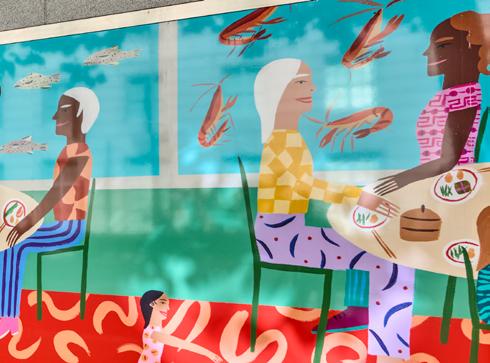
Art Wall, Chelsea Ryoko Wong’s Community Feast checks all of these boxes and more. Wong’s vibrant painting depicts a crowd of diverse ages and backgrounds sharing good food and lively, intergenerational conversation at a Chinese dim sum restaurant. “Civic Center is an area that encompasses many AAPI communities,” says Wong, “and the theme of dim sum felt particularly appropriate to the Asian American experience as it symbolizes harmony, prosperity, and closeness to family and friends.”
The joyful and inclusive nature of Community Feast is a thoughtful and deliberate response to the surge of crimes in recent years against the AAPI community, some of which took place in the Civic Center area. Wong explains that this neighborhood “is renowned for its ethnic, cultural, and economic diversity; this work aims to ensure that both residents and visitors feel acknowledged and reflected in its imagery.”
Painter and muralist Chelsea Ryoko Wong attended Parsons School of Design, New York and received her BFA in printmaking from California College of the Arts. She was the first recipient of the CAA Hamaguchi Emerging Artist Residency at Kala Institute in Berkeley (2010) and a finalist for SFMOMA’s esteemed SECA Art Award (2022). Wong lives and works in the Mission District of San Francisco; the installation of Community Feast on the Lui Art Wall coincides with a solo exhibition of her work at Jessica Silverman Gallery in San Francisco’s Chinatown.
Curated by Naz Cuguoglu, Assistant Curator of Contemporary Art & Programs, Community Feast is the third commission for the Lui Art Wall, a venue to recognize local talent, address the Asian American experience, and raise issues relevant to the museum’s neighbors — from immigrant traditions to concepts of sanctuary – through an ongoing series of works primarily by Bay Area Asian American artists.

To commemorate their 25th anniversary and a quarter-century of collaboration with the Asian Art Museum, the Society for Art & Cultural Heritage of India (SACHI) has donated a site-specific installation on the third-floor landing, just outside the South Asia galleries. What Will It Take / For Us To Awake?, an original work by Ashwini Bhat, was installed in July of this year. Occupying a prominent location within the museum, this iconic bronze and steel sculpture “offers a powerful symbol of growth and resilience while foreshadowing exciting new directions for the South Asia collection,” says Padma Dorje Maitland, Malavalli Family Foundation Associate Curator of Art of the Indian Subcontinent.
Living in the foothills of Sonoma Mountain, California after 35 years in Southern India, Bhat works in sculpture, ceramics, installation, and video. Her unique visual language explores the intersections between body and nature, self and other, drawing influence from syncretic shrines and rituals as well as nonlogocentric, non-Western metaphysical concepts of empathy for the non-human.
“My biomorphic sculpture — part bell, part calla lily — brings into focus a link between human and floral forms,” explains Bhat.
“For years, I’ve been working with the calla lily motif as a symbol for regeneration and resilience, for the alliance of the female body
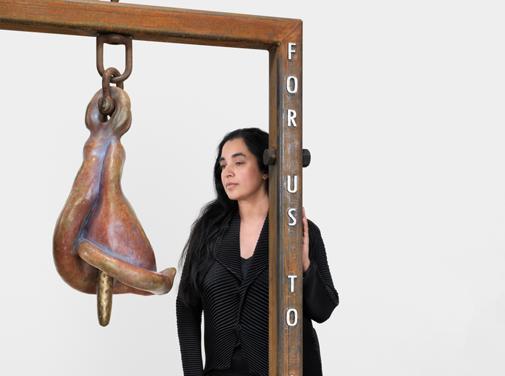
What Will It Take / For Us To Awake? (detail), 2024, by Ashwini Bhat (pictured). Bronze and patinated steel Commissioned for the Asian Art Museum by the Society for Art & Cultural Heritage of India (SACHI) in appreciation of a valued partnership on the occasion of its 25th anniversary (1997–2022), 2024.86a-c.
and nature. Just as the act of ringing the bell in a temple is believed to induce mindfulness, this calla lily bell metaphorically suggests a wake-up call, focusing attention on our climate and ecological emergency.”
Based in the Bay Area, SACHI is a longtime creative and collaborative programming partner of the museum, producing unique educational events that promote understanding and appreciation of the rich and diverse landscape of Indian art, culture, and heritage.
Please join us for an opening celebration at the museum on Oct. 17 from 6:30 to 7:30 p.m. The following week, enjoy a virtual program held in partnership with Frieze Sculpture, London on Oct. 23 at 10 a.m., featuring Fatos Ustek, Ashwini Bhat, and Padma Dorje Maitland in conversation.

The Asian Art Museum’s collection of Japanese bamboo baskets — over 900 examples reflecting a remarkable variety of shapes, textures, colors, and techniques — have been among the visiting public’s favorite artworks. Thanks to a generous gift from collector Lloyd Cotsen (1929–2017), who donated his collection of 832 baskets to the museum in 2002 (and 75 more in 2021), the collection is among the largest of its kind in the world.
Besides being an avid collector, Cotsen also celebrated new generations of bamboo artists by sponsoring competitions to spotlight the remarkable artistry, creativity, and craftsmanship of this time-honored art form. Today, inspired by Cotsen’s legacy, Robert Coffland and Margo Thoma have organized The Next Generation Bamboo Art Prizes, a competition with the aim of increasing awareness of the art form while providing financial support for young and mid-career artists in the form of a monetary prize.
Starting Dec. 12, visit the Henri and Tomoye Takahashi Gallery in the Tateuchi Japan Galleries to see five award-winning artworks from this year’s competition, including the Coffland Grand Prize Winner, the Excellence in Tradition Prize Winner, and the Excellence in Sculpture Prize Winner. Associate Curator of Japanese Art Yuki Morishima served as a judge of the competition. On opening day, the museum will host a conversation with the Coffland Grand Prize winner, Hajime Nakatomi. Visit asianart.org for more details about the display and conversation.
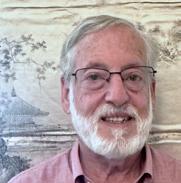
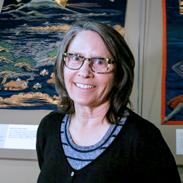
The selection of 19th-century gift covers (fukusa) currently on view in the Atsuhiko Tateuchi and Ina Goodwin Tateuchi Japan Galleries is not to be missed. Donated to the museum by supporting docent and longtime supporter Peter Sinton and his wife Beverly Sinton, these textiles — traditionally used (and reused) to cover gifts — feature a dazzling range of virtuosic techniques. Conservator Denise Migdail got to know these works intimately while preparing them for exhibition; we asked her to comment on a few of her favorites.

These works are all incredibly well constructed; they're very much made to impress. The thought process that went into the designs is fascinating. Here, it’s amazing to see so many textures reproduced so skillfully in a single textile. You get the depth of the wood grain in the box, and the lines of the calligraphy look handpainted; the detailed calligraphic embroidery is even legible. There are places where it seems to merge into three dimensions suddenly. I’m just fascinated by the breadth of the techniques.
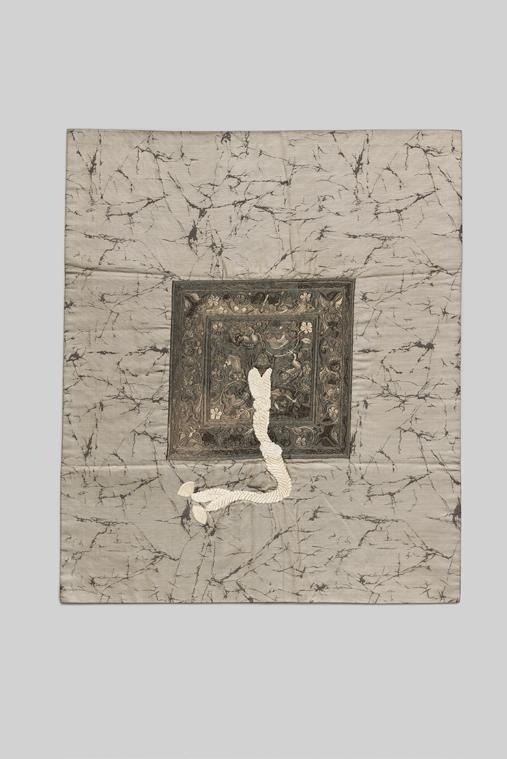
This is a compound weave structure made up of silk and silver (applied to paper) threads. I’m inept with computers, but knitting or weaving — they’re just a different type of code, right? When something is a compound, it means there's more than one set in any one direction. Sometimes you have multiple warps showing up at different times, bonding the weft. In this case, the horizontal element is actually silver that's been bonded to paper, then cut into really thin strips and used like a thread.
Silk is one of the strongest natural fibers — parachutes used to be made from it. Strand for strand, in terms of diameter, silk is stronger than steel. But it's made to last a silkworm about a week for metamorphosis, and we expect it to last forever. Besides biologic attackers like mold or pests, silk also has a protein in it which is inherently light sensitive and breaks down with exposure to light; some dyes and finishing processes can also alter the silk and cause accelerated aging.
These works came to us in excellent condition, so all I have to worry about are the little things like making sure the lines look parallel and reducing wrinkles and creasing. In this case, because there are so many metal threads, creasing presents an additional challenge. The folds end up in the metal threads: they're bent. Additionally, any time there are two layers, it gets a little more complicated.
This is one of my favorites; deceptively, it looks the most basic in many ways. While it technically looks like a plain tapestry weave, the threads are woven over thin wires. Then you pull the wires out, except for where you want to cut the velvet — which is these bales, the combs, and some of the feathers — and the rest just looks like corduroy. In the mid- to late 1800s, they developed a technique where you stamp your painting; you steam it and get the paint to stay; and then you cut very small areas in the velvet using a tiny knife. So the whole thing had this ribbing, and then the artist painted it using stencils; and after that was dried or cured, probably in an oven, just these little areas were cut to get the pile.
I was curious about the metal components in this collection, and because we have an XRF [x-ray spectroscopic analyzer], I was able to test and determine what they are. Sometimes you have to default and just say metal-wrapped threads, because you can't be sure exactly what components are present. Many of the fukusa in this rotation contain gold threads — and fairly pure gold, at that; a few contain silver. This one has more copper, which explains some of the green corrosion products you can see up close.
I’m just fascinated by the breadth of the techniques.

Richard (Dick) Jones and Robert (Bob) Johnson were together for nearly 50 years. Both veterans of the Korean War, they were active members of the Asian Art Museum community for decades.
Inspired by their close friends and fellow Connoisseurs’ Council members Forrest Mortimer and Stuart Harvey, Dick and Bob decided to give their entire estate to establish an endowed fund supporting conservation and museum acquisitions.
Like the Mortimer-Harvey Fund, the Jones-Johnson Fund will support much-needed conservation efforts such as the projects you see on these pages and help the museum grow its collection for future generations.

Join us for the 39th annual Japanese New Year bell-ringing ceremony on Sunday, Dec 29. (The event is typically held on Dec 31, but this year that date falls on a Tuesday, when the museum is closed to the public.) A beloved tradition at the Asian Art Museum and centuries-old practice throughout Japan, the ceremony invites participants to reflect upon the passing year and literally ring in the New Year with a 2,100-lb, 16th-century Japanese bronze bell. Originally from a temple in Tajima Province and now a part of the museum’s permanent collection, the bell will be struck 108 times by museum visitors to curb the 108 mortal desires (bonno) that, according to Buddist belief, torment humankind.
The Member ceremony will begin at 10 a.m., concluding at 12 p.m. before a second ceremony is held for the general public. Check our website as the event date approaches for further details.

Beyond stellar exhibitions and world-class collection galleries, new and beloved programs this fall and spring offer something for everyone. Free First Sundays and the return of monthly Thursday night programs are opportunities to celebrate art and culture through an array of experiences designed to captivate and engage audiences.
On the first Sunday of each month, the museum opens its doors with free admission, welcoming visitors to explore the galleries. Families can delight in a variety of activities, including storytelling, craft-making, and interactive workshops. Kids can pick up a complimentary Draw with Reina pack at the information desk and channel their own creativity. Free First Sundays often feature cultural celebrations, such as Lunar New Year, Filipino Heritage Month, and Diwali. Discounts on special exhibitions are also available.
Meanwhile, Thursday Night programming offers vibrant, afterhours art experiences: Once a month, during extended hours, the museum hosts themed events centered around current exhibitions, cultural celebrations, or larger social themes. Visitors can savor dinner from Asian Box and enjoy the evening city views from the East West Bank Art Terrace.
With these diverse offerings, the Asian Art Museum invites everyone to explore, celebrate, and experience art, culture, and community in a variety of exciting ways throughout the year. Visit our online calendar for event details. We look forward to seeing you at the museum!
As students of all ages head back to school this fall, the Asian Art Museum’s Education department is eagerly preparing to welcome students and educators back into the galleries. The School Programs team is dedicated to ensuring that every learner, especially schoolaged children, has an engaging and enriching experience.
The museum’s commitment to education shines through its comprehensive school tour program, designed to engage students of all backgrounds with Asian and Asian American art. Working closely with Bay Area teachers, the School Programs team crafts educational experiences that bring the museum’s diverse collections to life. This collaborative effort helps students gain a deeper appreciation of cultural and artistic traditions.
“I really enjoy being able to work with school communities around the Bay Area,” says Lennard Nerona, School Programs Coordinator. “We get such diverse groups of students come through our galleries, whether in elementary school or college, from an SFUSD neighbor school or an independent school from one of the greater Bay Area counties. It’s always interesting to see the multitude of ways in which students respond to the art and to their experiences here.”
In addition to the School Programs team, the museum’s docents and storytellers play an integral role in guiding students through the galleries. Their expertise and passion for Asian art enrich the tours, making them interactive and appealing.
“Making Asian and Asian American art accessible to all and building connections across communities is the cornerstone of what we do at the Asian Art Museum,” says The Barbara Bass Baker CEO and Executive Director Jay Xu. “Our dedicated education team welcomes thousands of students to the museum each year; the work they do is fundamental to ensuring we carry out our mission, day in and day out.”
As the new academic year begins, the Asian Art Museum looks forward to fostering a love of art and culture among students. With an array of educational programs and a dedicated team, the museum is set to provide unforgettable experiences for all who visit.
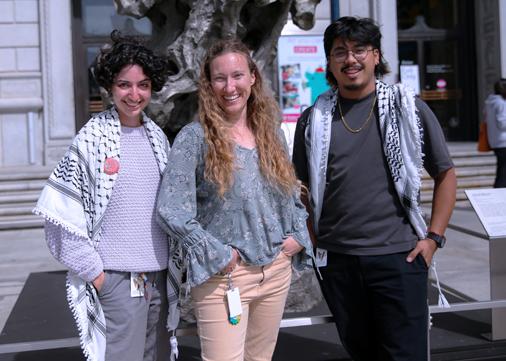
CAN YOU FIND:
Something from nature?
Something red?
Something that looks shiny?
Something that makes you happy?
Something that makes you feel relaxed?
Something that makes you curious about how it was made?
Something that gives you an idea for a fun adventure?
Tell us what you find at the museum! members@asianart.org
SHARE YOUR DISCOVERIES WITH US AT

Can you help Reina find her way back to the museum?
























2025 will mark the fiftieth anniversary of the Asian Art Museum hosting The Exhibition of Archaeological Finds of the People’s Republic of China, a remarkable landmark show born from the “Ping Pong diplomacy” that helped thaw relations between the U.S. and the PRC in the early 1970s. On view for eight weeks during the summer of 1975 at the museum’s former home in Golden Gate Park, it drew 835,891 visitors — setting a record for the highest attendance for any exhibition of Asian art in San Francisco.
A highlight was the famed “Flying horse of Gansu,” a Chinese bronze sculpture from approximately the second century CE. A few years ago, former docent Barbara Liddell offered this recollection: “That show was so exciting — being in an environment like that was amazing. I remember one piece on view was a flying horse. In those days, the docents could go through the galleries by themselves when the museum was closed. Standing in front of that horse sculpture was a great thrill. I could be in there when nobody else was: no guards, nobody. It was inspiring to be able to experience the art without the crowds.”
The exhibition of Archaeological Finds of the People’s Republic of China was the first of nearly a dozen subsequent groundbreaking exhibitions borrowed from China at the Asian Art Museum, many showcasing treasures never before on view outside their home country — the most recent being last spring’s Phoenix Kingdoms: The Last Splendors of China’s Bronze Age.

Thursday, October 24, 2024
Asian Art Museum
200 Larkin Street
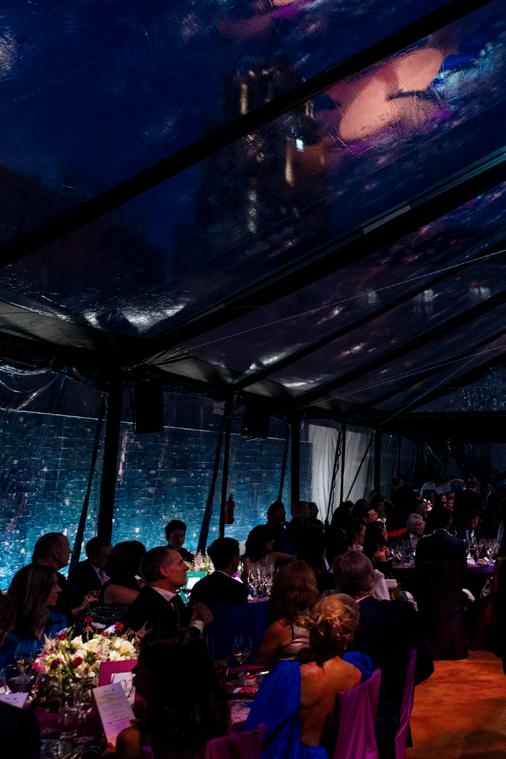
5:30 PM
Gala Cocktails & Dinner
Get tickets
8 PM Hallyu! Dream Party
Get tickets
10 PM Afterglow*
Get tickets
*Gala Dinner and Hallyu! Dream Party guests receive complimentary access to Afterglow.
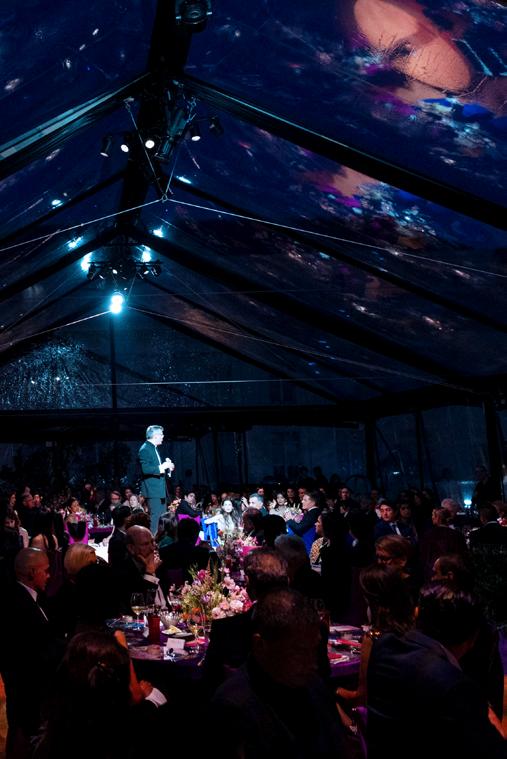
Join us for a lively cocktail reception featuring signature drinks and entertainment. Our exclusive, seated Gala dinner will celebrate the fusion of distinct Korean flavors with contemporary flair, honoring the energy and inspiration of Hallyu! The Korean Wave. Thank you to our supporters for your early table commitments. To inquire about dinner seating availability, contact gala@asianart.org.
Awaken your senses as you stroll into the streets of Seoul. This fresh reception welcomes fans of Korean culture to experience exclusive artist activations in the vibrant atmosphere of an upscale night market. Savor vibrant street food favorites, from chewy tteokbokki to crispy Korean fried chicken, perfectly matched with cold, refreshing beers. Additionally, guests will enjoy access to uniquely curated artist activations, Korean-inspired cocktails, and special guest appearances. The Hallyu! Dream Party rolls into Afterglow at 10 p.m.
Afterglow continues the celebration with a party throughout the Asian Art Museum. Members receive the exclusive price of $125. Nonmembers may purchase tickets for $175. Our most accessible ticket option offers you an open bar, late night bites, music, and more!



Book an exclusive space for your group when you visit Hallyu! The Korean Wave. Members at the Patron level and above are invited to reserve the Fisher Room for private dining experience and gathering space for family and friends. This is one of the many rental spaces available in the museum for group gatherings like birthday parties, family meals, date nights, and more. Upgrade to Patron level today to enjoy complimentary access to the Fisher Room and enhanced benefits year-round. Contact members@asianart.org or call 415.581.3740.
Enjoy four hours of Fisher Room access and save on your meal with Asian Box with your member discount. With your complimentary rental, you’ll be able to plug into Fisher Room’s sound system to play your favorite K-pop bops.
Bring the kids for an exploration of folklore and mythology with one of the museum’s beloved Storytellers. You can choose from hundreds of enriching stories and Asian Box will work with you to create a fantastic kids’ lunch menu.
Enjoy a tea service followed by a walking tour with one of the museum’s knowledgeable docents.

Discover the perfect backdrop for your special occasion with our exquisite event spaces. Choose from three unique options designed to make your celebration unforgettable.
Price: $15,000 | Capacity:
Start with a cocktail hour in the Loggia, a beautiful U-shaped balcony overlooking the Grand Staircase. Featuring stately columns, a barrelvaulted ceiling, and a world-class collection of Chinese ceramics, the Loggia sets the perfect tone. For an additional $1,000, guests can explore the second-floor galleries, showcasing art from China, Korea, and Japan. Continue the evening with dinner and dancing in Samsung Hall, a grand Beaux-Arts style ballroom with Travertine marble walls and a stunning chandelier.


Price: $18,000 | Capacity: Up to 225 guests
Begin your event in Bogart Court, a modern indoor court crowned by glass ceilings three stories high, creating an outdoor feel without exposure to the elements. Your guests will then proceed up the Wilbur Grand Staircase to Samsung Hall for an unforgettable dining experience.
Price: $25,000 | Capacity: Up to 250 guests
Opt for the East West Bank Art Terrace to host a grand outdoor event. This 7,300-square-foot terrace atop the Akiko Yamazaki and Jerry Yang Pavilion offers stunning views and contemporary sculptures. In case of inclement weather, activities can move to Bogart Court or Samsung Hall.
Each venue provides a unique and memorable setting tailored to your needs. Contact rentals@asianart.org to create your perfect event in one of our stunning spaces.



Exciting news for Korean cuisine lovers! Asian Box is thrilled to unveil a special menu featuring flavorful dishes inspired by the Korean wave and crafted with the freshest ingredients. Hurry in to try the limited-time K-pop fried chicken, kimchi rice, The Red Flavor (strawberry soju mojito), and spicy cucumber banchan. Visit soon to savor these menu items, exclusive to the Asian Art Museum and only available while Hallyu! is on view — and pair them with a newly available rotation of beers from across Asia.
Enjoy Asian Box’s 100% gluten-free and locally sourced offerings in the Connie and Bob Lurie Cafe on the museum’s first floor or the East West Bank Art Terrace on the second floor. Visitors can enjoy Happy Hour specials on select Thursday evenings and on the first Sunday of each month.
Asian Box is open during regular museum hours from 10 a.m.–5 p.m., Friday through Monday and 12–8 p.m. on Thursdays.
Members enjoy a 10% discount on all orders and everyone earns bonuses through the Asian Box loyalty program!
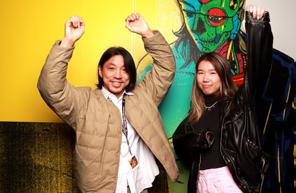
As part of its broader investment in cultural communities and its expanding contemporary program, the Asian Art Museum launched a new tier of membership this summer: the artist membership, available for actively practicing artists of all origins, working across all genres and media, at any stage of their career. In addition, each living artist with artwork in the museum collection has been awarded a lifetime artist membership.
“Our artist membership will honor the commitment and vision of working artists — in our collection and beyond — who come to the museum for inspiration, connection, and scholarly research,” says Danielle Hobart, the Asian Art Museum’s director of membership. “We have already seen the incredible impact that the artists in our contemporary art program have made at the museum, and we can’t wait to welcome this new community to our membership family.”
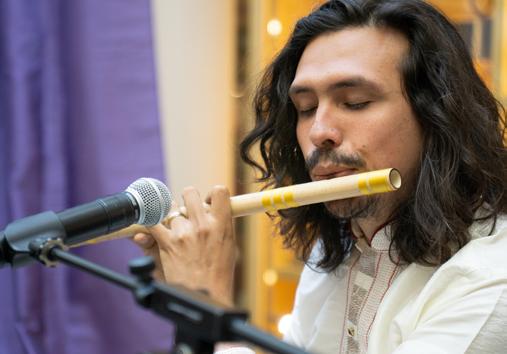
Through recent museum programs such as RAD (Research And Development) and group exhibitions such as Into View: New Voices, New Stories or After Hope: Videos of Resistance, the goal has been, in the words of the museum’s Head of Contemporary Art Abby Chen, “to ensure the Asian Art Museum is a destination for discovery, inspiration, and engagement for artists across generations and cultures. By making membership accessible to working artists in our community — and beyond — we demonstrate our commitment to a vital Bay Area arts scene. Our goal is for us to connect with more artists than ever before and to offer our museum as a place of care and imagination for Asian and Asian American culture and identity in all its many forms.”
Benefits of the new artist membership tier include invitations to special artist-centric happy hours, meet ups, talks, and exhibition openings. Learn more online.
Members speak about what makes the Asian Art Museum meaningful to them:
Yours is a great institution and the arts importantly fill a person's soul.
marina lewis hunt
The museum provides a window into the world by presenting the many Asian cultures, arts and history. It's a part of the world I knew little about until I discovered the museum. It has enriched my life.
bianca larson
I am Asian and I feel that the Asian Art Museum plays an important role in preserving and educating our society on the culture and history of Asian peoples.
marilyn kanemura
I like that you are attempting to blend "mod and trad," showing more contemporary Asian art in addition to the classics and antiquities. Emphasizing the classics reminds us of the importance of ancient cultures and their relevance to today; a focus on contemporary art demonstrates the vitality and diversity of Asian cultures.
lynne wittenberg
It has opened a whole new way of looking at the world.
mary hunt
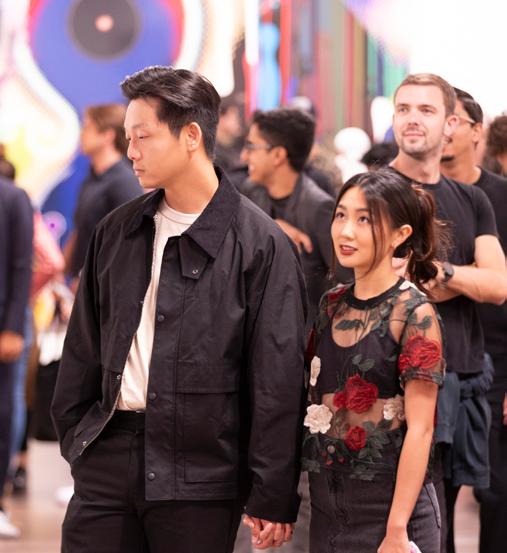
Since the dawn of human experience, there has been a search to understand the mysteries that surround us. As we contend with the unknown and the unknowable, beliefs in spirits, demons, gods, and other divinities have emerged to help us make sense of our time on Earth.
Join us as our Instructor of Record, Asian Art Museum Associate Curator Jeff Durham, guides us through 14 lectures on Visualizing the Divine. Noted scholars will discuss traditions from different parts of Asia, exploring how both ancient and contemporary cultures have depicted visions, feelings, and beliefs relative to the metaphysical and the otherworldly.
Lectures will be held on Fridays from 10:30 a.m. to 12:30 p.m (PST) beginning Friday, Jan. 31, 2025. For registration information, please visit the Society for Asian Art website.
The Society for Asian Art is an independent support organization for the Asian Art Museum, providing dynamic programs on Asian art and culture for more than 60 years. In addition to the Arts of Asia Lecture Series, Society members enjoy literature and culture courses; visits to art galleries and artist studios; study groups; and opportunities to travel with scholars. Please join us!

This fall, the Boutique is a one-stop shop for the K-Wave superfan in your life. Discover hundreds of Hallyu!-related items priced from $5 to $700, most sourced from Korea. Highlights include:
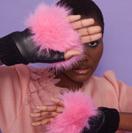


• Special collab merch from Beth S.J. Lee, Creative Director for Darcygom: custom matted prints and cards, scarves, and her line of low-top sneakers (available for the first time in the U.S.!)
• Dresses, skirts and accessories from The House of Leehwa, featuring traditional Korean designs with a contemporary twist
• Whimsical knitwear and fun faux fur jackets, plus colorful accessories.
Official “Squid Game” merchandise: games, costumes, t-shirts, caps, mugs, glasses, and stickers.



Beauty bar with skincare products; nail polish collection and presson nails; and makeup products from Beauty of Joseon, Rom&nd, COSRX, Tonymoly, Etude, Round Lab, Dr.Jart+, Peripera, Tirtir, Skinesque, and more.
• New albums including the limited edition NewJeans X Murakami collaboration
• An assortment of products from SM Entertainment: fan lightsticks, photo cards, accessories, bags, and jewelry featuring K-pop groups like Red Velvet, Aespa, and more
• BTS chocolates made in CA, plus BTS Line Friends items — dolls, accessories, backpacks, socks, hats, jewelry, and more
• Official Blackpink merchandise including mugs, ramen bowls, chopsticks, socks, throw blankets, beanie hats, and more.
After you visit Hallyu! The Korean Wave, explore the Boutique’s Holiday Artisan Market, featuring dozens of local makers offering one-of-a-kind items including fashion and accessories, jewelry, ceramics, specialty food items, holiday decorations, and more.
Museum members get first pick at a special preview hour from 9 to 10 AM on Saturday, Nov. 16. Members receive a 10% discount on all purchases.
Admission to the Holiday Artisan Market is free to all — spread the word and bring your friends.
Friday, Nov 15 | 9–10 AM (early access for members)
Friday, Nov 15 | 10 AM–6 PM (open to all)
Saturday, Nov 16 | 10 AM–6 PM (open to all)
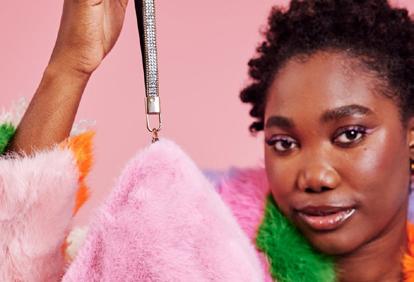
The generous contributions of our annual corporate partners at the Silver Sponsor level and above have enabled us to bring world-class art exhibitions, educational programs, and community outreach initiatives to life. We extend our sincere gratitude for their continued commitment to the Asian Art Museum.
For more information, please contact: partnerships@asianart.org


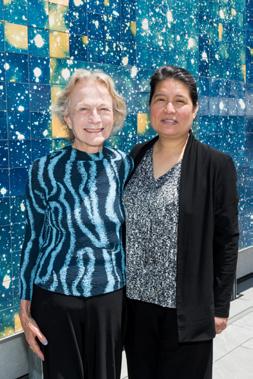
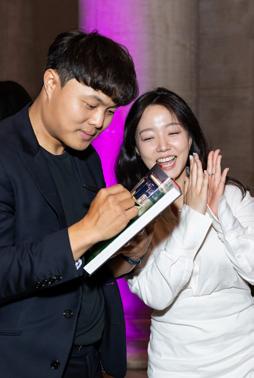
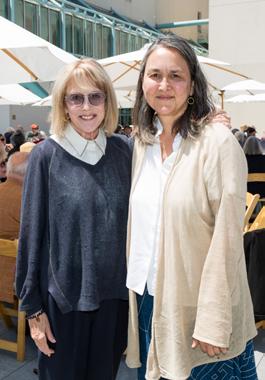
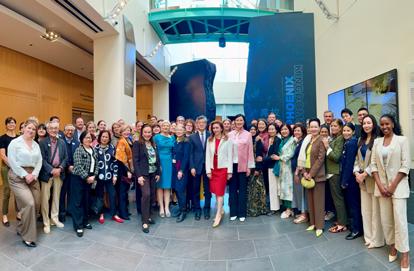
1 2 3 4 5 6 6
Francis Mill and Mama Mill celebrate a sweet moment at the opening of Phoenix Kingdoms: The Last Splendor of China's Bronze Age. Phoenix Kingdoms Opening Reception, Apr 17, 2024. Ian Chin Photography. Courtesy of Asian Art Museum.
Jeff Katz, Anne Katz, Dr. Jeff Durham, and Olga Woo soak up some San Francisco sunshine on the East West Bank Art Terrace. Annual Preview Luncheon, July 10, 2024. Ian Chin Photography. Courtesy of Asian Art Museum.
Chef and author Deuki Hong signs his book for a guest at the launch event for “Koreaworld: A Cookbook” by Deuki Hong and Matt Rodbard at the Asian Art Museum. “Koreaworld: A Cookbook” San Francisco Book Launch, May 10, 2024. Anna Nguyen for Ian Chin Photography. Courtesy of Asian Art Museum.
Dessa Goddard and Sheila Payaqui, head of the Conservation Center at the Asian Art Museum. Annual Preview Luncheon, July 10, 2024. Ian Chin Photography. Courtesy of Asian Art Museum.
Joyce Clark and Dr. Natasha Reichle, associate curator of Southeast Asian art at the Asian Art Museum. Annual Preview Luncheon, July 10, 2024. Ian Chin Photography. Courtesy of Asian Art Museum.
Gathering of the Consul Generals at the entrance to Phoenix Kingdoms: The Last Splendor of China's Bronze Age